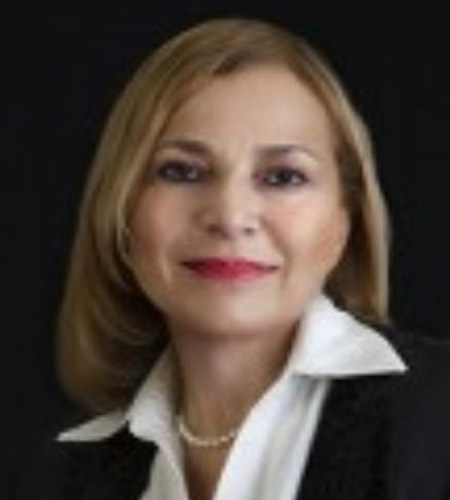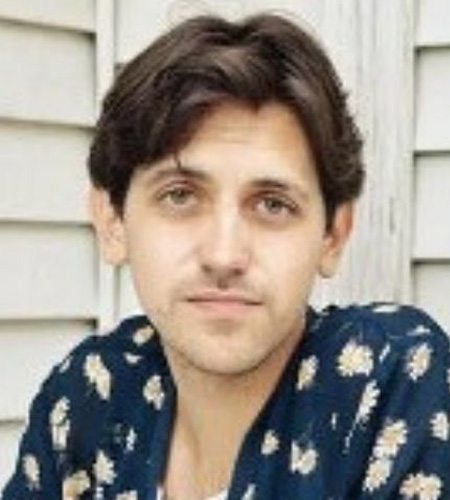Issue Archive
Transforming Horizontal Violence Globally

Ani Kalayjian & Andrew Dolinear
Section Editor: Claire J. Starrs
The Association of Trauma Outreach and Prevention (ATOP) MeaningfulWorld is an international non-governmental organization affiliated with the United Nation’s Department of Global Communication. MeaningfulWorld offers mental health education programs and workshops focusing on empowerment, stress management, time management, creating a healthy workplace, preventing burnouts, mindfulness, resolving conflicts peacefully, emotional intelligence, and meaning making. In addition, our humanitarian outreach teams have implemented rehabilitation programs for survivors of traumatic events in over 48 countries and 26 American states. Over the last three decades, MeaningfulWorld has conducted humanitarian missions in 50 countries aimed at transforming trauma caused by human-made and natural disasters. Although the primary aim of such missions is to facilitate healing and post-traumatic growth in affected individuals and groups, the utilization of surveys, workshops and other engagement efforts has provided insight into the individual and institutional factors that influence the ways in which traumatic events are integrated, processed, discussed, and passed on, in various cultural contexts.
Horizontal Violence (HV), also known as lateral violence, is defined as internalizing the aggression of a perpetrator and displacing it onto others within one’s own group (Hastie, 2002). HV has been shown to emerge from oppression, discrimination, and colonization (Embree & White, 2010). The resulting preference for the oppressor’s kind (e.g., their race, religion, color, gender, etc.), leads to oppressed people making negative assumptions about themselves and their own kind. Therefore, in-group individuals may start behaving as the aggressor, feeling entitled and putting other group members down. This may include attitudes and behaviors such as envy, jealousy, distrust, one-upmanship, negativity, denigration and displacement of frustrations and anger. Instances of HV have been described in several communities that MeaningfulWorld has served. In the African American community in the Southern United States, this process is called the “Crab in a Bucket” syndrome, where in a bucket full of crabs, when one tries to climb out, another will pull it back down, and as the cycle endlessly repeats, it leaves all the crabs stuck in the bottom of the bucket. Thus, in a fitting allegory for the process of HV, members of the oppressed group, stuck in the proverbial bucket, preclude other members from overcoming their condition.
Brief Literature Review
HV has primarily been examined in studies focusing on workplace dynamics, particularly among nurses in hospital settings. Much of this research was conducted in response to instances of hostility observed among nurses despite ostensibly sharing similar experiences, goals, and workplace status. Studies point to HV prevalence rates among US nurses ranging from 25.3% (Sellers et al., 2012) to as high as 85% (Wilson et al., 2011). In their 2002 study in this population, Hastie (2002) described examples of gossip, verbal abuse, intimidation, sarcasm, elitist attitudes, and body language such as eye rolling, folding arms, and disinterest. Furthermore, nurses report experiences of HV as both the victim (25.5%) and the witness (29.8%) (Sellers et al., 2012).
Embree and White (2010) identify various antecedents to HV, such as organizational imbalance of power, personal oppression, lack of empowerment, and a professionally dysfunctional culture. Moreover, Bent suggests that, due to their difficult working conditions, nurses are being oppressed, as the nursing profession is marked by a continual struggle for autonomy, accountability, and control over the profession (Bent, 1993). Nurses
may, therefore, be responding to a sense of powerlessness associated with restricted autonomy and autocratic leadership, and feelings of powerlessness and insecurity may manifest as aggression either turned inward or outward in the form of HV.
Until now, the HV model has seldom been applied to understand intragroup conflict and hostility outside of the realm of nursing. One exception is within the Indigenous community, where such concepts as internalized racism and internalized colonialism leading to HV, have been examined (e.g., Canada, Bombay et al., 2014; Australia, Whyman et al., 2021). Indeed, Bailey (2019), examined lateral violence in Indigenous post-secondary students in Canada. Using open-ended interviews, Bailey found that in addition to the complex burden of historical trauma due to colonization and colonized institutions, Indigenous students reported experiencing acts of HV. Despite recent efforts by the government to address historic oppression, these acts, Bailey contends, continue to negatively impact attainment of community, power, and resources. Other studies on HV in Indigenous communities also argue this process affects well-being and sense of identity (Whyman et. al., 2021).
Of note, other groups for whom bullying within the workplace, including from peers, has been explored, such as amongst the military (for review see Stuart & Szeszeran, 2021), first-responders (for review see Walker & Stones, 2020), and academics (see Goodboy et al, 2020 for discussion), do not fit within an HV framework, as these are not groups that experience overall oppression and discrimination.
Horizontal Violence in the Field
As we have learned through three decades of humanitarian work, the HV framework can shed light on both individual behavior and attitudes, and intragroup dynamics in far reaching contexts. Indeed, it provides a useful structure to map the relationships between institutional or cultural prejudice, and oppressed groups. Throughout our missions, we have identified several ways in which HV is expressed, including:
- Minimizing positive behavior, and lack of validation
- Fear and avoidance of reporting HV behavior
- Isolation from others
- Lack of respect and support
- Organizational chaos
- Personal and professional bullying
- Distrust, envy, jealousy, and gossip
- Discrediting success
- Undermining strengths
- Division and conflict instead of collaboration and mediation
We have observed these dynamics in more than a dozen missions, including to the countries of Haiti, Sierra Leone, and Armenia. Although these countries have unique histories and cultures, they have each experienced periods of armed conflict, genocide and collective violence, leading to intergenerational trauma, which is compounded by continued societal injustices. As such, these events have had similar effects on intragroup cohesion and HV in these three locations.
In 2022, during our last mission to Armenia, many Armenians expressed a degree of hopelessness. For example, one individual, when taught the concept of HV, immediately recognized it in her own community and culture, and said to the first author that she believed it could not be changed, and that our intervention efforts on the ground were in vain. Examples of HV in Armenia that we observed included distrust, envy, gossip, jealousy, putting others down, disregarding others’ achievements, finding faults in others, and making disparaging public announcements about others without any corroborating evidence. Additionally, given the complex political situation in the Middle East, thousands of Armenians have been forced to migrate from Iraq and Syria back to Armenia, and we noted instances of HV expressed against these new immigrants who were competing for already limited resources.
Throughout numerous missions to Haiti, volunteers with MeaningfulWorld have observed the previously identified signs of HV daily. For instance, in a capacity building effort, we worked to connect local organizations working on peace-building, with the objective of ensuring a continuation of these efforts after our mission’s conclusion. However, local organizers often refused or failed to cooperate with one another due to a lack of trust and comradery. Instead, they reported wishing to continue working with our organization, despite our mission lasting only a few weeks. When first discussing signs of HV in workshops, many people dismissed the idea that such actions and attitudes could be indicative of a greater issue; however, after describing HV in detail, they generally laughed and told us “This is a Haitian disease, we all are infected by it.”
Intervention Utilized
According to the literature on HV, the first step in addressing it is to increase awareness of its prevalence, followed by proactively addressing its multiple components within each specific environment (Lewis & Malecha, 2011). In various contexts where we have encountered HV, MeaningfulWorld has utilized the 7-step Integrative Healing Model (Kalayjian, 2017; Kalayjian, & Diakonova-Curtis, 2019), in which various aspects of emotions are assessed, identified, explored, expressed, processed, validated, and finally re-integrated.
- Step 1: Assess Levels of Distress, Disagreement, or Conflict. Participants are given a written questionnaire that helps them define the kind of trauma, distress, or dispute they are working on.
- Step 2: Encourage Expression of Feelings. Each participant in the group is encouraged to describe their feelings about the trauma, or conflict from their own perspective and express feelings in the “here and now.”
- Step 3: Provide Empathy and Validation. Each participant’s feelings are validated by the mediator, group facilitator, and group members. Emphasis is placed on understanding others and putting one’s feet in the opponent’s shoes.
- Step 4: Encourage Discovery and Expression of Meaning. Participants are asked, “What lessons, meaning, or positive associations did you discover about yourself as a result of this dispute?”
- Step 5: Provide Information. Practical tools and information are shared on how to gradually integrate the conflict resolution information that has been provided, and care for oneself as a caregiver/mediator.
- Step 6: Nurturing Mother Earth. Participants are provided with practical tools for connecting with nature (Mother Earth) and ways to care for one’s environment.
- Step 7: Breath Work and Meditation. Participants are guided on how to use breathing, to create peace within, and to foster gratitude, compassion, faith, strength, and forgiveness in response to conflicts, with the objective of increasing self-empowerment.
This 7-step model is an integrative approach that incorporates modalities from multiple schools, including psychodynamic, interpersonal, existential, humanistic, and learning-theory, as well as third-wave approaches that encompass mind-body-ecological-spiritual practices. This model has been useful in addressing the behaviors associated with HV, by focusing on group-based exercises in developing emotional intelligence through empathy, while also treating the causes through forgiveness, mindfulness and meaning making. This intervention model has been utilized to address HV in multiple countries (Kalayjian, 2017; Kalayjian, & Diakonova-Curtis, 2019). However, research specifically examining the efficacy of the various components of this intervention, would greatly benefit future humanitarian missions in this area.
In sum, the prevalence of HV observed in numerous culturally distinct groups suggests the possible benefits of utilizing this framework in future research on collective trauma, intragroup conflict, and community building in oppressed groups. We believe such an analytic lens has the potential to better identify problematic behaviors and attitudes, as well as address their causes in individual and group settings.

ANI KALAYJIAN, EdD, President of Meaningfulworld, and Adjunct Professor of Psychology at Teachers College, Columbia University, John Jay College of Criminal Justice, multicultural and multilingual Psychotherapist, Genocide Prevention Scholar, International Humanitarian Outreach Administrator, Integrative Healer, author, and United Nations Representative. She was awarded Outstanding Psychologist of the Year Award by the American Psychological Association (2016, Trauma Division), a Humanitarian Award from the University of Missouri-Columbia (2014), the 2010 American Nurses Association Honorary Human Rights Award, and an Honorary Doctor of Science degree from Long Island University (2001) recognizing 30 years as a pioneering clinical researcher, professor, humanitarian outreach administrator, community organizer and psycho-spiritual facilitator around the globe and at the United Nations. In 2007 she was awarded Columbia University, Teacher College’s Distinguished Alumni of the Year. She has over 100 published articles in international journals, books, and is an author of Disaster & Mass Trauma, Chief Editor of Forgiveness & Reconciliation: Psychological Pathways to Conflict Transformation and Peace Building (Springer, 2010), Chief Editor of two volumes on Mass Trauma & Emotional Healing around the World: Rituals and Practices for Resilience and Meaning- on Mass Trauma & Emotional Healing around the World: Rituals and Practices for Resilience and Meaning-MakingMaking (Praeger, ABC-CLIO 2010), author of Amazon Bestseller Forget Me Not: 7 steps for Healing our Body, Mind, Spirit, and Mother Earth (2018), A Journey of Empowerment, Healing, and Transformation (2023), and a meditation CD called “From War To Peace” transforming generational trauma into healing and meaning-making.

ANDREW DOLINAR holds a MA Human Rights Studies from Columbia University and a BA in Sociology from The University of Illinois at Urbana-Champaign. He has worked on crisis response and conflict monitoring at Human Rights Watch in New York, and sentencing reform at Penal Reform International in Tbilisi, Georgia. Much of his career has focused on human rights issues in Eastern Europe and the Caucuses, in particular LGBTQ+ rights, transnational organizing, and conflict intervention. He currently serves as the Vice President of the Association for Trauma Outreach and Prevention at MeaningfulWorld.
Citation: Kalayjian, A., & Dolinar, A. (2023). Transforming horizontal violence globally. Trauma Psychology News, 18(1), 22-27. https://traumapsychnews.com
